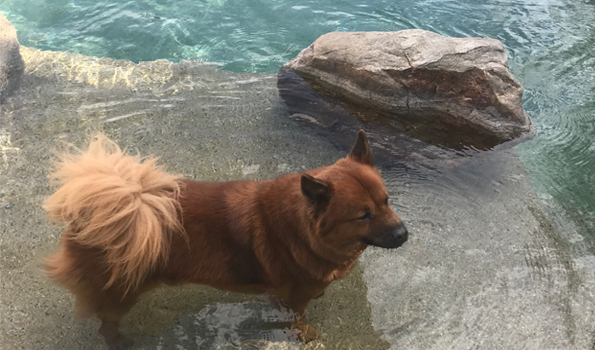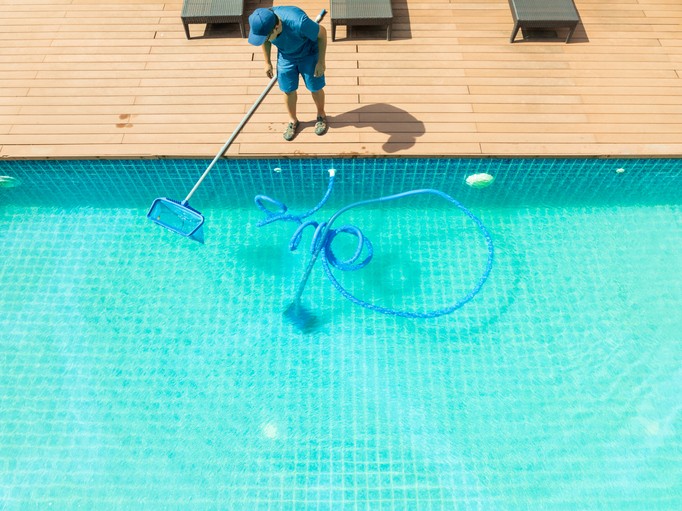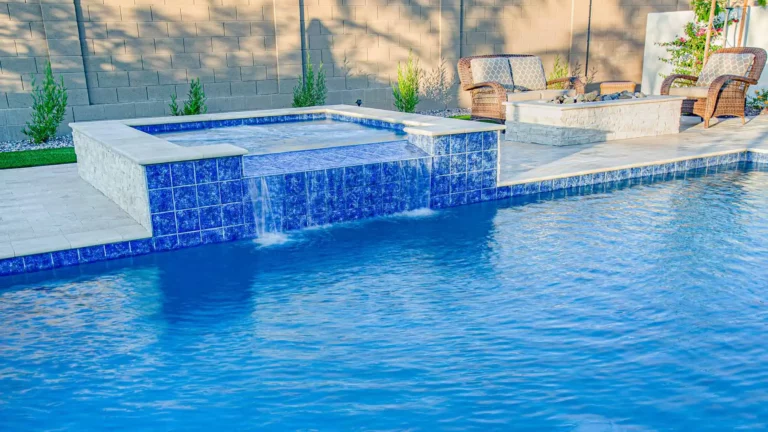
In the heat of a Phoenix summer, the swimming pool can be the only place comfortable outdoors. And that is probably what your dog is thinking as well. But before you decide to jump into the water with your dog, there are a few things that you need to take into consideration to ensure that your dog is safe and that he or she will enjoy this activity with you.
First, just like people, not all dogs will like the water. And contrary to popular belief, not all dogs instinctively know how to swim. So just tossing a puppy or dog into the water can be a very traumatizing event that will ensure that your dog hates the water. A great deal of any dogs swimming ability will be genetic. Dogs who have been bred to swim will have long, strong limbs and some even have almost webbed paws. But dogs with short legs and short snouts are not going to be naturals in the pool. Their short legs will make swimming very difficult, and shorter noses are very tough to keep out of the water. Also, understand that even in warmer temperatures, very small dogs can get chilled easily in pool water. Pugs, Shih Tzu’s, Chihuahua, Bulldogs and Basset Hounds are some of the breeds that find water and swimming very challenging, simply because of the body type. These breeds could be much happier laying in a shaded spot while you swim or hanging out in the step so that only their feet are enjoying the cool water.
Once you have determined that your dog enjoys the pool, it is critical that you teach your dog how to exit the pool. Make sure that the dog can get out of the pool unassisted to be sure that even if you are not near, he or she can get out and not be at risk for drowning. There are many manufacturers of dog specific pool ramps that will allow almost any dog to walk safely from your pool. Some will even accommodate a goliath of 200 pounds!
Having a dog in the pool is certain to increase the bacteria, but this can be managed by keeping up on water balance and chemistry tests on a regular basis. Ear infections are also commonly blamed on swimming pool water, but they are easily preventable. The fur around your dog’s ears will hold a great deal of moisture which can be a good place for bacteria to reside. Dry your dog’s ears as well as possible after swimming to help reduce the chance of infection just as you would with a human child. Weekly cleaning with an ear treatment recommended by your vet is also a good idea.
Swimming is a great activity for your dog in the summer as long as he or she enjoys the water and is able to swim or play in the pool in a safe manner. It can provide a cooler and safer environment for exercise in the hot months and a great time for you to just hang out together.



